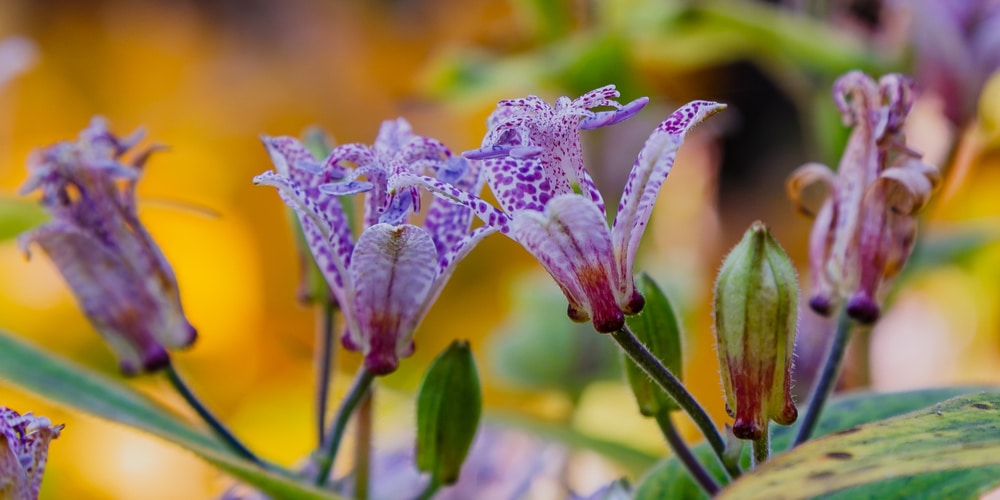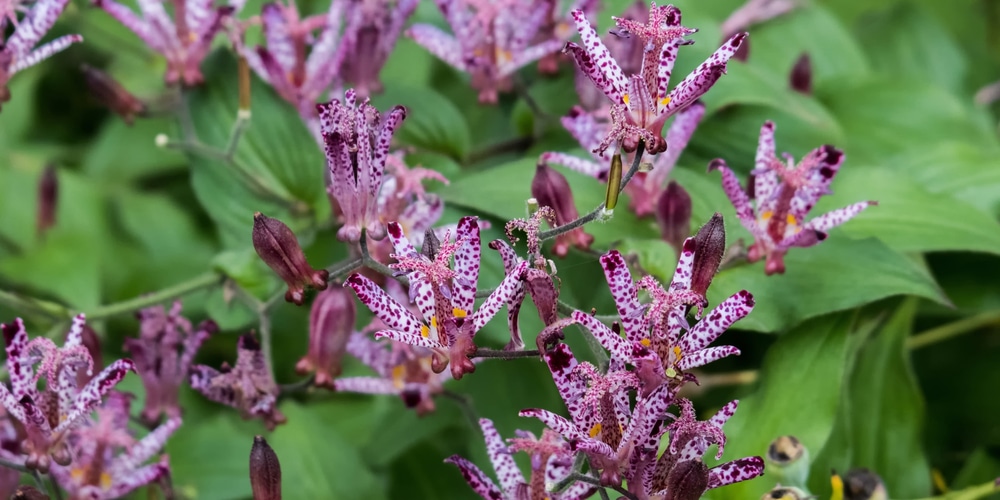The toad lily is a quirky perennial plant with fascinating speckled flowers and spotted foliage. For those who are wondering, toad lily zone 6 is actually viable since it’s cold-hardy and can come right back after frost.
Toad lilies are classified within the USDA zones 4 through 9, and there are a few species of toad lily are well-suited to zone 6 climate.
Can Toad Lily Grow in Zone 6?
Zone 6 region gardeners will be delighted to know that they can add the whimsical toad lily to their collection.
For the best results, you should get the following species- the common toad lily, ‘Tojen,’ and ‘White Towers’, all of which are rated to thrive in zone 6 areas. You can leave them as is when frost strikes (and they will usually survive), but if you want to make sure, you can take several measures to ensure they come back.
You might need to do a bit of research before planting toad lilies. Some can tolerate temperatures of up to minus 25 degrees F, while others are rated hardy only in zones eight and above. The Formosa toad lily, for example, is within zone 6 hardiness but requires extra protection from the cold.
The best way to protect your toad lilies during the winter is to add several layers of mulch. Organic material, such as shredded leaves, straw, and wood chips, insulate your plant and keep it warm enough to survive the spell. It also helps that you put them in areas where they won’t likely be exposed to freezing winds.
Make sure to cover the lily’s crown, which peeks just above the soil surface. You will also need to do some hard pruning to keep them compact and tidy for winter. Spent flower stalks can be cut down to the base, and the flower should be allowed to seed. Extra foliage can be removed once they turn utterly yellow, so the plant diverts its energy to forming rhizomes.
Where Do Toad Lilies Grow?
The name ‘toad lily’ should give you an idea of where it wants to grow. Like its namesake, toads love ponds, and therefore lilies should be near them as well.
Toad lilies grow best in part-shade to speckled sunlight, usually under cover of a tree or bush. They constantly want moist soil that’s well-draining. This is key to their longevity, so as long as they’re getting the water they need, they usually don’t mind getting hit with warm and sunny days.
Compost and organic matter are a plus for these plants. You’ll know when they want to water if the leaves have brown edges. As far as fertilizer is concerned, you can put in a generous top dressing of compost, and they’ll be happy.
Toad lilies are pretty hardy, but you’ll need to watch out for invading snails and slugs. Besides that, planting them in the best spot is the most importantcritical first step in seeing your toad lily thrive in your garden. Propagating toad lily is usually done by collecting seeds, planting stem cuttings, or via division.
How to Care for Toad Lily Zone 6
Not all toad lily species can grow in zone 6, but thankfully some, like the common toad lily, are hardy enough to thrive in the region.
Flowering and growth habits differ from other plants in that they wake up starting late summer to fall and usually through winter. What’s excellent about toad lilies is that they’re easy-growers and can be put in containers or garden beds.
If you’ve cared for lilies before, then you’ll know that the most critical thing to watch out for is moisture levels. Soils that are too heavy or dry must be amended with compost and similar water, so they get better at absorbing and retaining moisture. These plants won’t mind an extra watering or two during the summer and hot days.
Toad lilies can tolerate full sun, but leaf scorch is a risk. They can be placed in full shade but at the expense of less flowers. Morning sun and afternoon shade is perhaps the optimal spot for these plants, and they’ll reward you with curious speckled blooms in varying colors, like yellow, pink, blue, and purple.

